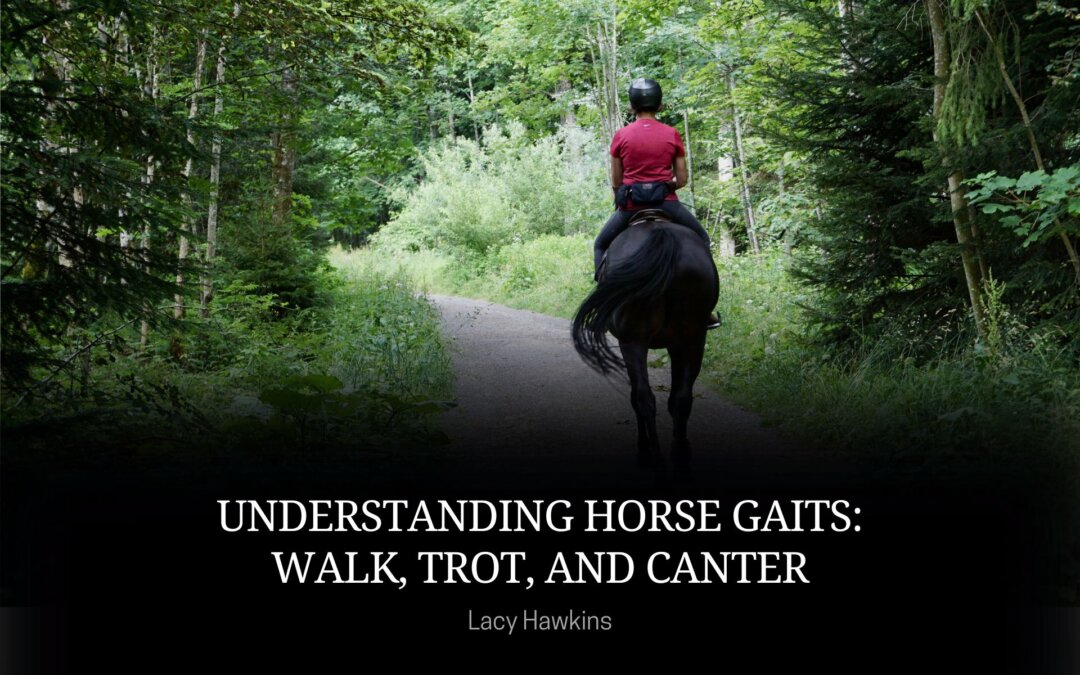Understanding the various gaits of a horse is fundamental to equestrian knowledge. Horses possess a remarkable range of gaits, each with distinct characteristics and purposes. The walk, trot, and canter are the three most common gaits, and they play crucial roles in riding, training, and horsemanship.
The Walk:
The walk is the slowest and most straightforward gait of a horse. It’s characterized by a four-beat rhythm, which means that each of the horse’s four legs moves independently.
Characteristics of the Walk:
• Four-beat rhythm: Each leg moves in a specific sequence – first, one hind leg, then one front leg, followed by the other hind leg, and finally, the other front leg.
• Slow pace: The walk is the slowest of the three gaits, making it ideal for relaxation and allowing riders to enjoy the scenery.
• Maximum contact with the ground: At least one foot is always in contact with the ground during the walk, providing stability and balance.
• Minimal suspension: The horse’s body remains relatively level, with minimal suspension between strides.
The Trot:
The trot is a two-beat gait that is faster and more animated than the walk. It is often the first gait that riders learn after mastering the walk.
Characteristics of the Trot:
• Two-beat rhythm: In the trot, diagonally opposite legs move together. First, the right hind leg and left front leg move, followed by the left hind and right front leg.
• Bouncing motion: The trot has a bouncing or up-and-down motion that can be challenging for riders to sit comfortably.
• Increased speed: The trot is faster than the walk and provides a more dynamic ride.
• Suspension: There is a brief suspension between strides when all four legs are off the ground.
The Canter:
The canter is a three-beat gait that is faster and more comfortable to sit than the trot. It is often described as a rocking horse motion and is the gait where a horse is most likely to lead with one particular leg, known as the “lead.”
Characteristics of the Canter:
• Three-beat rhythm: The canter involves a sequence of three beats. The horse leads with one front leg, the diagonal pair of legs, and the other hind leg.
• Rocking motion: The canter has a rocking or swaying motion, which is smoother and more comfortable for riders compared to the trot.
• Varying speeds: The canter can be slow and collected, or it can be extended for a more energetic pace.
• Lead changes: Horses can change their lead while cantering, which is essential in many equestrian disciplines.
Understanding and mastering these three fundamental horse gaits is essential for riders and equestrians. It not only improves riding skills but also helps in communicating effectively with the horse, maintaining balance, and achieving success in various riding disciplines. Each gait has its unique characteristics, and by becoming proficient in all of them, riders can truly appreciate the versatility and grace of these magnificent animals.
